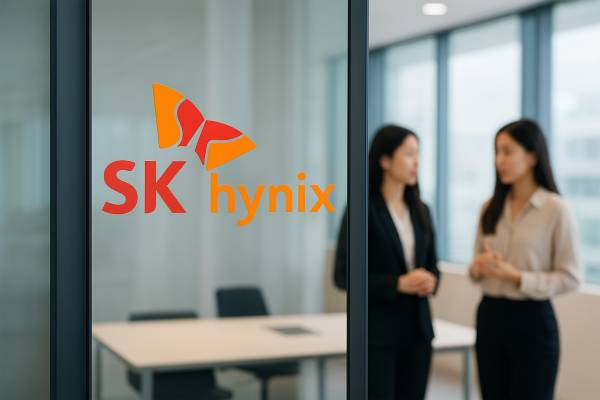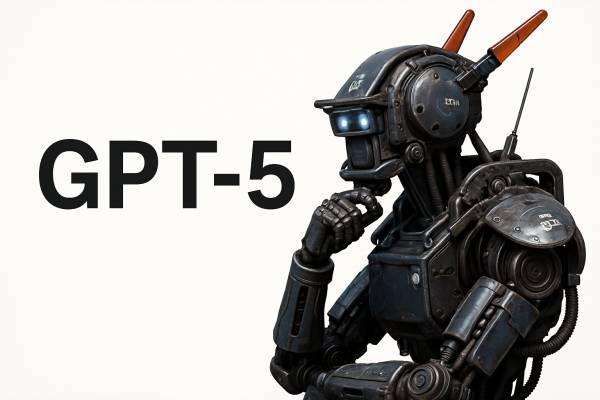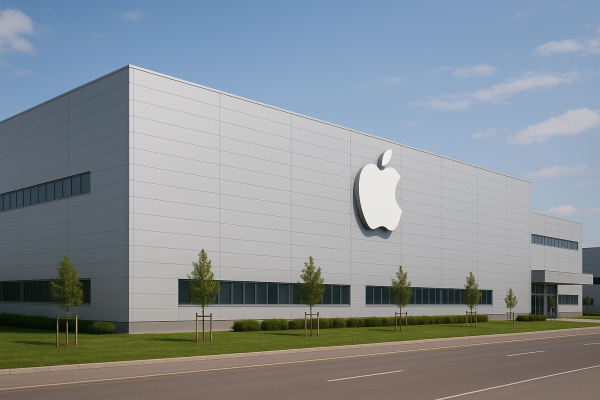Rapid change is not uncommon in the world of technology, but rarely does it affect so many sectors at once as today's artificial intelligence (AI) revolution. In an interview with Y Combinator, Satya Nadella, CEO of Microsoft, not only assessed technological developments, but also placed the development of AI in a broader social and economic context. His approach is restrained, calm, and purposeful: AI is not a mystical entity, but a tool that must be properly applied and interpreted.
One of Nadella's key messages during the interview is that artificial intelligence should not be anthropomorphized, i.e., endowed with human characteristics. AI does not think, feel, or possess consciousness—it is a layer of technology that serves specific purposes and helps people achieve them. He believes that the name “artificial intelligence” is misleading, as it is much more of a computational tool than a machine imitation of human intelligence. This perspective can help us see more clearly how and what AI can actually be used for.
Microsoft's approach to AI is, in Nadella's words, three-pronged: platform, product, and partnerships. The company does not want to shape the technological landscape solely through its own tools, but sees itself as an ecosystem in which various companies and developers work together to create new solutions. This openness is key to the next wave of technology, which is built around AI. Nadella has experienced four such major shifts in his career—client-server systems, the internet, mobile, and the cloud—and he sees AI as not just a new tool, but a whole new paradigm.
The special role of AI lies in the fact that it builds on previous layers of technology that have now matured. The availability of cloud services, for example, was a prerequisite for the spread of AI supercomputers capable of training and operating large language models. This cumulative development allows AI to spread extremely quickly—but that doesn't mean that all other factors can keep up at the same pace.
The technological infrastructure faces new challenges. The computational demands of AI—such as tasks based on parallel data processing—are significantly different from what we have been used to. This requires new system-level solutions, and Nadella sees this as a golden age for system software. This layer represents not only technological development, but also business and social opportunities, especially in areas where AI can bring real efficiency gains.
However, the pace of development is not limited to the technology side. One of Nadella's most important observations is that change management is the biggest obstacle to the introduction of AI. Rethinking work processes, job roles, and business logic is a serious challenge for companies. AI is not integrated by replacing a few pieces of software, but fundamentally transforms the way we work. This is not necessarily a threat, but rather an opportunity—but only if the players are ready to learn and adapt.
Among the specific applications, Nadella highlights healthcare and public services. Reducing administrative burdens, automating processes, or even shortening documentation times can not only save money, but also save lives. According to his example, the collaboration between electronic medical systems and AI could shorten hospital discharge processes by hours or even days, thereby directly improving patient care.
Looking at the current directions of AI development, Nadella highlights three key factors: memory, device usage, and permissions management. These will form the architecture of the next generation of AI-based applications. The goal is not just to provide “intelligent” responses, but to perform complex tasks in an environment where the system can remember previous interactions, manage access, and collaborate with other digital devices. This architecture points toward agent-based systems that do not perform a single task but can follow complex behavior patterns.
The application layer is also undergoing a revolutionary transformation. Nadella draws a parallel here between SQL databases and today's AI models: while machine learning previously developed vertically, using separate systems for each purpose, today there is a general model layer on which applications can be built—similar to how various software programs are built on top of a relational database. This facilitates development and makes systems more scalable and reliable.
According to Nadella, this is precisely why the future of knowledge work will change. Tasks that consist of routine data movement, administration, and structuring can gradually be transferred to AI agents. This does not mean the end of work, but rather its shift toward more creative, analytical, and strategic thinking. The goal is for employees to remain in a state of “flow,” meaning they can concentrate on their most valuable tasks without interruption.
Similar processes are taking place in the field of software development. AI enables “just-in-time” development, where users can generate customized applications for themselves in real time according to their own needs. This does not mean that packaged, pre-made software will disappear—rather, they will exist in parallel, complementing each other. However, the role of developers will change: instead of writing lines of code, the focus will be on creating software architectures and product logic.
According to Satya Nadella, the future of AI is not predetermined – human decisions, developments, and social responses will shape the direction it takes. The perspective presented in the interview encourages us to consider not only the technological possibilities, but also social responsibility. AI can only be sustainable if its use creates added value in both economic and social terms – otherwise, its use of resources cannot be justified and it will not gain social acceptance.
Technological reality and the social embeddedness of AI
In the second part of the interview, Satya Nadella spoke about the current perception of AI—the imbalance between the industry narrative and social experience. In his view, AI is currently overrated globally: it has become a dominant topic in both the media and corporate communications, while the real question remains how the technology will become organically accepted in societies. However, this acceptance is not solely a function of technological capabilities, but is deeply linked to the extent to which users perceive tangible, quality-of-life improvements.
Nadella illustrated the positive scenario with a specific example. During a 2023 development project in India, a local engineer used the GPT-3.5 model and domestic open-source speech processing systems to create a chatbot that operated via WhatsApp, enabling small farmers to apply for government subsidies. The case study demonstrated not only the speed of technological adaptation, but also its social relevance. According to Nadella, these are the stories that have real meaning—and on which the technological narrative could be built.
Continuing this line of thought, he moved on to the relationship between AI and education. Nadella cited a World Bank-sponsored study that found that the introduction of tools such as Copilot in Africa and Latin America is one of the most promising technological interventions in education. This recognition represents the fulfillment of an old technological promise: the democratization of access and the possibility of empowerment are now within reach.
However, these developments cannot be interpreted solely as software innovations. According to Nadella, Windows Copilot, which sees and hears, opens up a new era of human-machine interaction. This type of “perceptual” operation—which responds to both visual and acoustic inputs—could, in his view, become a new basic level of computer use, without the user having to master the logic of the machine. In contrast to traditional graphical user interfaces, interaction is increasingly moving towards natural language and human perception.
However, relying on such machine agents raises new questions: if AI becomes our operating system—that is, our primary connection to computing—then trust becomes a fundamental requirement. According to Nadella, this trust has three pillars: data protection, security, and the digital sovereignty of countries. These are not abstract concepts, but practical expectations that every system serving millions of users must meet – whether it is an individual user, a corporate tenant, or a government organization. According to Nadella, Microsoft must take a leading role in line with these principles, not only in a technological sense, but also in a normative sense.
In the final part of the interview, the tone became more personal. Nadella talked about his career and his advice for future generations. He emphasized that it is not positions that should be pursued, but rather that every current task should be performed with maximum ambition, regardless of how significant it may seem. For example, he still considers his very first job to be the best – not because it was the most influential, but because it was then that he learned how to interpret a given task beyond its own framework.
As he sees it, leadership qualities are not tied to titles or positions. It revolves around three key skills: the ability to see clearly, to generate energy in the community, and to creatively address problems that seem unsolvable at first glance. These are the attitudes that he believes make teams functional – and which are essential not only for addressing technological challenges, but also social ones.
The future of quantum computers was also briefly discussed during the conversation. Nadella emphasized the importance of long-term development here as well: Microsoft has been working in this area for two decades. Their goal is to create a stable, fault-tolerant system that enables the simulation of nature using quantum logic. In this context, AI is not a goal but a tool: an emulator that opens up new avenues in research and simulation. The combination of quantum computers, AI, and high-performance computing promises new scientific and technological possibilities—but the infrastructure and knowledge breakthroughs needed to achieve this are only just beginning to emerge.
Finally, when Nadella was asked what he would be doing if he were 22 years old today, he returned to his roots in his answer. She mentioned tools such as Word, Excel, and Copilot, which she believes not only serve productivity but also empower and help people analyze, create, and interpret. If she were starting out today, she would work in areas where new forms of human-machine interaction are emerging—not looking for spectacular breakthroughs, but lasting opportunities.
The interview can be viewed in the video below:





























